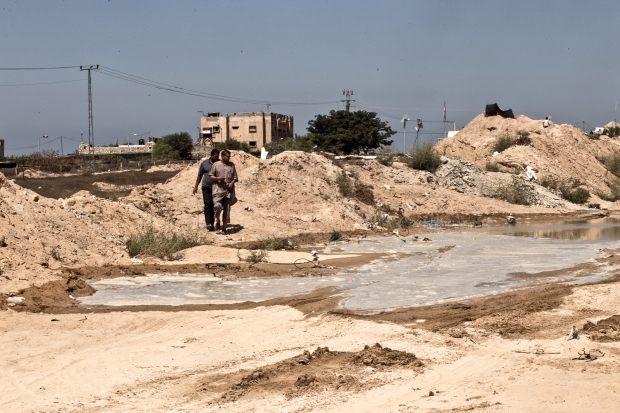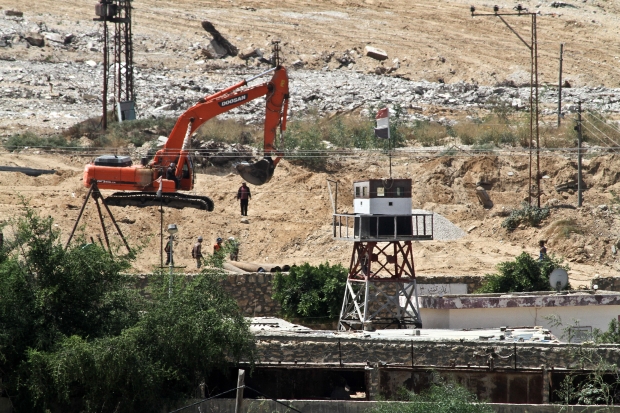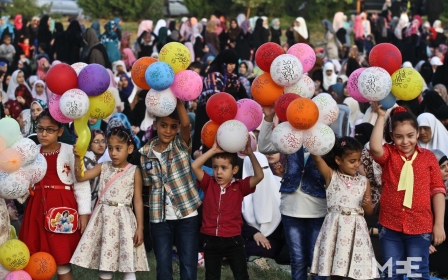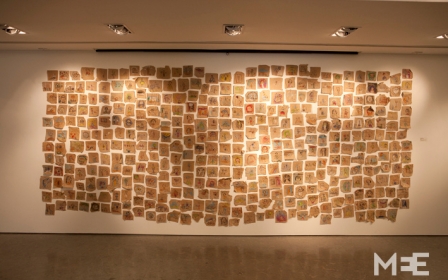Egypt floods Gaza's tunnels with seawater

Egyptian military vehicles are transferring Mediterranean Sea water to the Rafah border, to fill a newly-built crude canal, flooding and destroying the lifeline tunnels connecting Egypt and blockaded Gaza.
But the story goes deeper: the Egyptian government is trying to economically crush Hamas, an ally of the Muslim brotherhood.
Gaza, and its 1.8 million population, has been surviving under an Israeli economic and military blockade for 9 years, suffering increasing poverty and military attacks, leading the UN to announce, in a new report, that Gaza will be made uninhabitable by 2020.
Local police sources in Rafah told MEE on condition of anonymity that Egypt has destroyed 95 percent of supply tunnels connecting Gaza Strip and Egypt. The tunnels were first constructed immediately after Israel’s disengagement from the Sinai Peninsula, as part of the Camp David agreement between Israel and Egypt. But digging got more intense after Israel declared a blockade on Gaza after Hamas won the 2006 Palestinian elections.
Egypt is planning that sea water will flood into any remaining undiscovered tunnels and completely destroy them. Most tunnels are usually 20 meters deep, and can stretch for three hundred meters inside Egyptian Rafah.
Over the past months Egyptian military bulldozers have also destroyed many Egyptian homes to create a buffer zone of at between 500 and 1,000 metres on the Egyptian side, and 1,000 metres. Entire neighborhoods have been flattened being gutted.
Israel also tried to fight Gaza’s tunnels by digging a canal and pumping sea water into the 14 km borderline with Egypt, but due to environmental damage and danger to natural aquifer water systems, it built a separation wall instead; deep into, and above, the ground. But this tactic didn’t seem to stop desperate Gazan’s from building tunnels to escape Israel’s economic punishment.
Hamas’s government started to flourish on what economists called the booming “tunnel economy” until current Egyptian President Abdel Fattah al-Sisi joined Israel in trying to destroy it.
Egypt contributed to Gaza’s blockade by first dumping sea water on an area inhabited by farmers and communities living around the border, causing great concern that already-meagre homes and livelihoods would be lost, and ground subsidence would cause homes to collapse not long after being rebuilt following Israel’s last bombing campaign.
Seventy-year-old Mansoura Abu Shaar said her home sustained severe damage as a result of constant bombings over the past months when Egypt also tried to destroy residential Egyptian homes near the border to create a buffer zone.
She appealed to President Sisi to stop the project — as she doubts it will even bring stability to Egyptian citizens.
“Is that how a country treats its long-standing neighbors now living under siege?” she asks MEE.
Egyptian military personnel won’t speak openly of the nature of the project, but some local experts have said the aim is to create fish farms — as bulldozers are seen throughout the night, digging in the area. No one knows what this Israeli-Egyptian project really intends to create along the blockaded Gaza’s border with Egypt.
Water pipes can be seen on the Egyptian side of the border-leading from the beach area into the west of the city, to an area filled with supply tunnels.
A local water engineer said that pumping sea water into natural clean-water aquifers will increase salinity twenty-fold.
Gaza is already suffering from a shortage of clean water and due to rationing of electricity, water-purification systems which supply the enclave with clean water are near collapse, due to Israel’s blockade on spare parts, tools and maintenance supplies.
However, local engineer Hamad said that while Gaza has witnessed and endured so many Israeli missile attacks and bombings, the threat to clean water and hygiene brings more sustained punishment and added long-term danger upon Gaza’s people.
Mayor of Rafah, Subhi Radwan believes this could lead to the forced migration of the local population.
“The sea water is leaking into the clean aquifer, damaging the ground structure and pure water,” he said.
Radwan said that drinking water, for the population, will not be available soon, as dirty salt water is pushed into the already damaged plumbing system of Gaza.
“This will also deprive farmers of the ability to plant consumable vegetables and all forms of fresh plants which rely on clean aquifer waters,” the mayor added.
Abu Shaar admits that she is frightened of the current digging and sea water flooding the area, but she has no option but to sit with her husband and watch as the new danger approaches.
“We can’t sleep at night — even walking to the bathroom is scary as we worry about our home collapsing on shifting, flooded land,” she said.
Meanwhile, as the flooding continues, Nizar Al-Wahidi - director of the land and irrigation department at the Ministry of Agriculture in Gaza - also expressed concern that this project will flood the borderline area with salt water and destroy the soul and culture of rural life in Rafah, which is considered to be a productive agricultural area at the moment.
“Such a project will affect the coastal area of 30 km inside the Gaza Strip,” he said.
Al-Wahidi warned that continuing the project threatens at least 3,000 natural aquifer wells by increasing the percentage of salty water in the natural underground system.
In this worst-case scenario, Rafah Mayor Radwan said many of his residents would migrate to other areas with very limited habitable space.
Meanwhile, pro-Sisi Egyptian newspaper Al-Bawaba reported that the aim of this project is to control the area by creating a canal of seawater, turning it into a “development” resource by establishing fish farms.
The newspaper reported that Hamas became aware of the project only after about 80 percent of it had been accomplished.
Top Hamas official Ismail Haniyeh has called on Egypt to stop digging the canal. During an Eid Al-Adha speech he stated that the canal damages the history and image of Egypt and its people, and endangers a shared environment.
Middle East Eye propose une couverture et une analyse indépendantes et incomparables du Moyen-Orient, de l’Afrique du Nord et d’autres régions du monde. Pour en savoir plus sur la reprise de ce contenu et les frais qui s’appliquent, veuillez remplir ce formulaire [en anglais]. Pour en savoir plus sur MEE, cliquez ici [en anglais].






